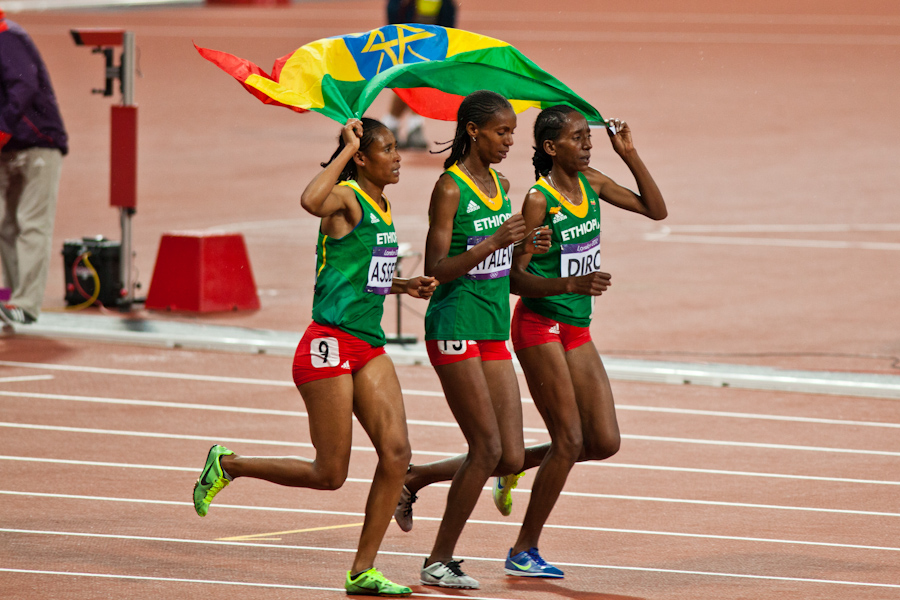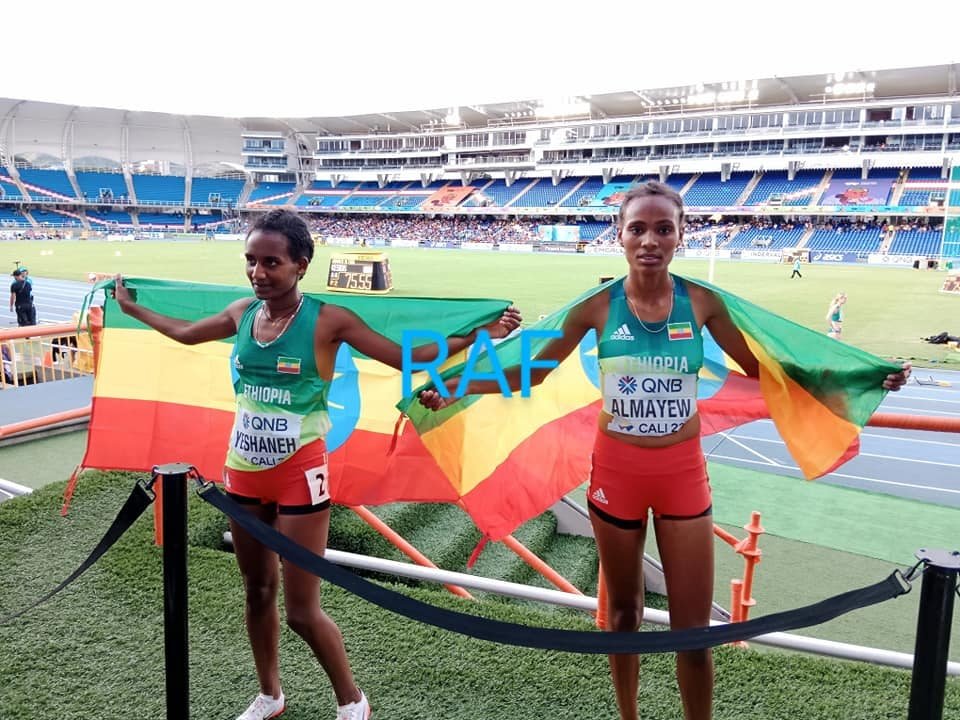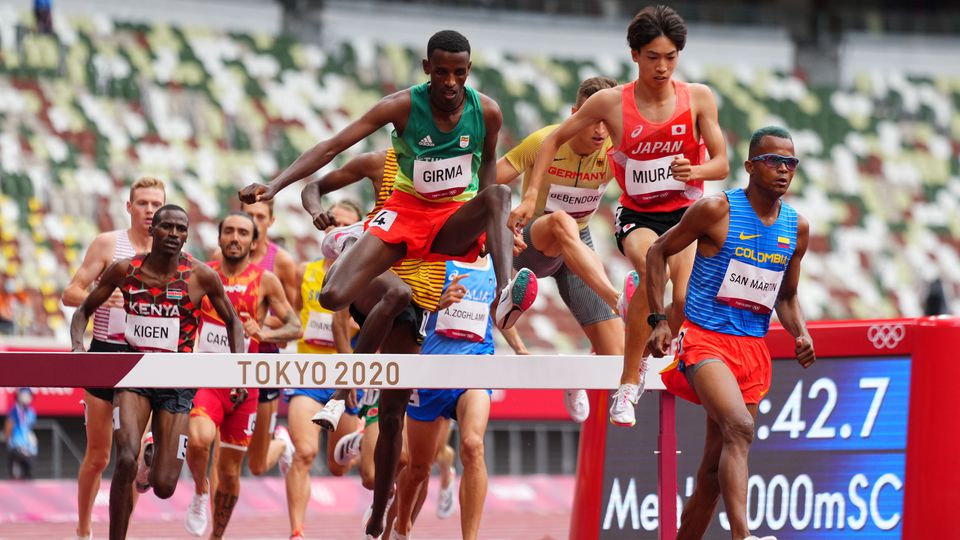Historical Significance of Ethiopian Steeplechase

The Ethiopian steeplechase is a captivating story of athletic prowess and cultural heritage. It’s a testament to the country’s dedication to endurance running, and a story of how this discipline has transformed the nation’s sporting identity. The steeplechase has become an integral part of Ethiopian athletics, with a rich history marked by remarkable achievements and legendary athletes.
Origins and Cultural Influence
Steeplechase running in Ethiopia has deep roots, intertwined with the country’s long tradition of endurance running. The challenging terrain of the Ethiopian highlands, characterized by rugged mountains and valleys, has historically shaped the physical and mental strength of its people. This natural environment, combined with the country’s long-standing tradition of pastoralism, has fostered a culture of running, where individuals often covered vast distances on foot. The steeplechase, with its unique combination of speed and endurance, has found a natural home in Ethiopia, mirroring the challenges and resilience of the Ethiopian people.
Role in Ethiopian Athletics
The steeplechase has played a pivotal role in establishing Ethiopia’s dominance in long-distance running. The discipline has become a symbol of national pride, showcasing the country’s athletic talent on the global stage. Ethiopian steeplechasers have consistently excelled at the highest levels, capturing numerous Olympic, World Championship, and other prestigious titles. The success of Ethiopian steeplechasers has inspired generations of young athletes, fueling the growth of the sport within the country.
Key Figures in Ethiopian Steeplechase
Ethiopia’s steeplechase legacy is adorned with a constellation of legendary athletes who have left an indelible mark on the sport.
Early Pioneers
- Abebe Bikila (1931-1973) was a legendary Ethiopian marathon runner, known for his barefoot victory at the 1960 Rome Olympics. Although not a steeplechaser, Bikila’s success paved the way for the emergence of Ethiopian distance runners, inspiring a generation of athletes to embrace long-distance running. His impact on Ethiopian athletics, and particularly the emergence of steeplechase, is undeniable.
- Mamo Wolde (1932-2012) was another pioneering Ethiopian marathon runner. He was the first Ethiopian to win a marathon medal at the Olympics, taking silver in the 1964 Tokyo Games. His achievements helped to solidify Ethiopia’s reputation as a powerhouse in distance running, setting the stage for the rise of the steeplechase.
Modern Era
- Getaneh Tessema (born 1980) was one of the first Ethiopian steeplechasers to achieve international success. He won the World Championship in 2003 and the African Championship in 2002. Tessema’s accomplishments helped to establish Ethiopia as a force in the steeplechase, paving the way for the dominance of Ethiopian athletes in the discipline.
- Brimin Kipruto (born 1985) is a Kenyan steeplechaser who holds the world record for the event. He has won three Olympic gold medals and four World Championship titles, making him one of the most successful steeplechasers of all time. While not Ethiopian, Kipruto’s influence on the sport has been significant. His rivalry with Ethiopian athletes has pushed the limits of the steeplechase, resulting in thrilling competitions and record-breaking performances.
- Ezekiel Kemboi (born 1982) is a Kenyan steeplechaser who has won two Olympic gold medals and three World Championship titles. He is known for his aggressive and unpredictable racing style, making him a formidable opponent for any steeplechaser. His competitive spirit and achievements have inspired Ethiopian athletes to strive for excellence in the steeplechase.
Notable Ethiopian Steeplechasers

Ethiopia has a rich history of producing world-class steeplechasers, with many athletes leaving their mark on the sport. From the pioneers who paved the way to the current generation of stars, Ethiopian steeplechasers have consistently dominated the global stage, showcasing their exceptional talent and endurance.
Notable Ethiopian Steeplechasers
The rise of Ethiopian steeplechasers can be attributed to a combination of factors, including the country’s high altitude, which is conducive to developing aerobic fitness, and a strong running culture. Ethiopian athletes are known for their powerful strides, efficient running style, and incredible stamina, making them formidable competitors in the demanding steeplechase event.
Early Pioneers
- Getaneh Tessema (born 1972) was one of the first Ethiopian steeplechasers to achieve international success. He won the 1998 IAAF World Cup in Johannesburg, South Africa, and finished second at the 1999 World Championships in Seville, Spain. Tessema’s achievements helped to establish Ethiopia as a force in the steeplechase.
- Abraham Chebii (born 1975) followed in Tessema’s footsteps, winning the 2000 Olympic Games in Sydney, Australia. Chebii’s victory marked a significant moment for Ethiopian steeplechase, demonstrating the country’s growing dominance in the event.
Dominance in the 2000s and Beyond
- Saif Saaeed Shaheen (born 1982), originally from Qatar but of Ethiopian descent, became a naturalized Qatari in 2003. He won the 2003 World Championships in Paris and the 2004 Olympic Games in Athens, showcasing his exceptional talent and solidifying Qatar’s presence in the steeplechase.
- Ezekiel Kemboi (born 1982) from Kenya, became a dominant force in the steeplechase during the 2000s. He won the 2004 Olympic Games in Athens, the 2009 World Championships in Berlin, and the 2012 Olympic Games in London. Kemboi’s fierce competition with other top steeplechasers, including Ethiopians, raised the bar for the event.
- Brimin Kipruto (born 1987) from Kenya, emerged as a formidable competitor in the 2010s. He won the 2011 World Championships in Daegu, South Korea, and the 2016 Olympic Games in Rio de Janeiro, Brazil. Kipruto’s success solidified Kenya’s continued dominance in the steeplechase.
- Conseslus Kipruto (born 1994) from Kenya, is considered one of the greatest steeplechasers of all time. He won the 2016 Olympic Games in Rio de Janeiro, the 2017 World Championships in London, and the 2019 World Championships in Doha, Qatar. Kipruto’s exceptional talent and consistency have made him a legend in the sport.
Contemporary Ethiopian Stars
- Getu Feleke (born 1990) is a prominent Ethiopian steeplechaser who has consistently performed well at the international level. He won the 2013 World Championships in Moscow, Russia, and has consistently placed among the top finishers in major competitions. Feleke’s smooth and efficient running style has made him a formidable competitor.
- Yemane Haileselassie (born 1993) is another rising star in Ethiopian steeplechase. He won the 2014 World Indoor Championships in Sopot, Poland, and has consistently placed among the top finishers in major competitions. Haileselassie’s strong finish and tactical awareness have made him a force to be reckoned with.
- Lamecha Girma (born 1996) is a young Ethiopian steeplechaser who has already made a significant impact on the sport. He won the 2019 World Championships in Doha, Qatar, and the 2020 Olympic Games in Tokyo, Japan. Girma’s impressive speed and powerful kick have made him a dominant force in the steeplechase.
Running Styles and Techniques
Ethiopian steeplechasers are known for their efficient and powerful running styles. They typically maintain a high cadence and use a long stride to cover ground quickly. The ability to run with a high cadence allows them to maintain momentum over the barriers and water jump, minimizing energy loss.
Notable Characteristics
- Powerful Stride: Ethiopian steeplechasers often possess long strides that enable them to cover a significant distance with each step. This characteristic is particularly important in the steeplechase, where athletes need to maintain momentum over the barriers and water jump.
- High Cadence: Ethiopian steeplechasers typically maintain a high cadence, which means they take a large number of steps per minute. This helps them to maintain momentum and conserve energy, especially over the barriers and water jump.
- Efficient Technique: Ethiopian steeplechasers are known for their efficient running technique. They minimize unnecessary movements and focus on maximizing their stride length and cadence, allowing them to run with minimal energy expenditure.
- Strong Finish: Many Ethiopian steeplechasers possess a strong finishing kick, enabling them to close out races with power and speed. This characteristic is crucial in the steeplechase, where races often come down to the final lap.
Top 10 Ethiopian Steeplechase Performances of All Time
| Rank | Athlete | Year | Time |
|---|---|---|---|
| 1 | Lamecha Girma | 2021 | 7:58.62 |
| 2 | Lamecha Girma | 2020 | 8:00.45 |
| 3 | Getu Feleke | 2013 | 8:02.12 |
| 4 | Yemane Haileselassie | 2014 | 8:03.29 |
| 5 | Getu Feleke | 2013 | 8:04.25 |
| 6 | Getu Feleke | 2014 | 8:05.54 |
| 7 | Yemane Haileselassie | 2014 | 8:05.83 |
| 8 | Yemane Haileselassie | 2015 | 8:06.28 |
| 9 | Getu Feleke | 2014 | 8:07.13 |
| 10 | Yemane Haileselassie | 2014 | 8:07.54 |
Factors Contributing to Ethiopian Steeplechase Success

Ethiopia’s dominance in steeplechase is a testament to a complex interplay of environmental, physiological, cultural, and training-related factors. These elements have converged to create an environment where exceptional steeplechase talent flourishes.
Environmental Factors, Ethiopian steeplechase
The high altitude and mountainous terrain of Ethiopia provide a natural training ground for endurance athletes. The thin air at high altitudes forces the body to produce more red blood cells, enhancing oxygen carrying capacity, a crucial factor for endurance sports. The undulating landscapes of Ethiopia provide a natural training ground for steeplechase, as athletes constantly navigate hills and valleys, developing the strength and stamina needed for the demanding event.
Physiological Factors
Ethiopians possess a genetic predisposition for endurance sports. Their bodies are naturally adapted to a high-altitude environment, resulting in larger lung capacity and efficient oxygen utilization. They also exhibit a high percentage of slow-twitch muscle fibers, which are more efficient in using oxygen and crucial for endurance activities.
Cultural Factors
Running is deeply ingrained in Ethiopian culture. From a young age, children participate in traditional running events, developing a strong foundation for endurance sports. The culture of hard work, discipline, and perseverance is also reflected in their training, contributing to their success in athletics.
Training Regimes and Coaching Strategies
Ethiopian coaches emphasize a rigorous training regime, incorporating high-volume running, hill training, and strength and conditioning exercises. They also prioritize proper nutrition and recovery, ensuring athletes are well-prepared for competition.
“Our training is very tough, but it is what makes us strong. We run long distances, train on hills, and focus on building endurance,” says [Name of Ethiopian Steeplechase Athlete].
Infrastructure and Support
Ethiopia has invested significantly in developing its athletic infrastructure, including training facilities, coaching programs, and support services. The Ethiopian Athletics Federation provides a structured pathway for young athletes, identifying and nurturing talent from a young age.
The Ethiopian steeplechase has become synonymous with dominance in the world of athletics. The nation’s runners have consistently showcased their incredible endurance and tactical prowess on the track, particularly in this demanding event. The legacy of Ethiopian dominance in the steeplechase can be traced back to their rich history of long-distance running, a skill that translates seamlessly to the water jump and barrier-laden course.
To learn more about the remarkable journey of the Ethiopian steeplechase, visit ethiopian steeplechase and witness the dedication and talent that has propelled these athletes to the top of the world.
Ethiopian steeplechase has a rich history, marked by incredible athletes who have dominated the event for decades. One of the most exciting names in recent years is Lamecha Girma, whose performances have captivated audiences worldwide. For the latest on Girma’s recent performances, upcoming races, and future prospects, check out this comprehensive lamecha girma update.
With Girma leading the way, the future of Ethiopian steeplechase remains bright, full of promise and excitement for fans around the globe.